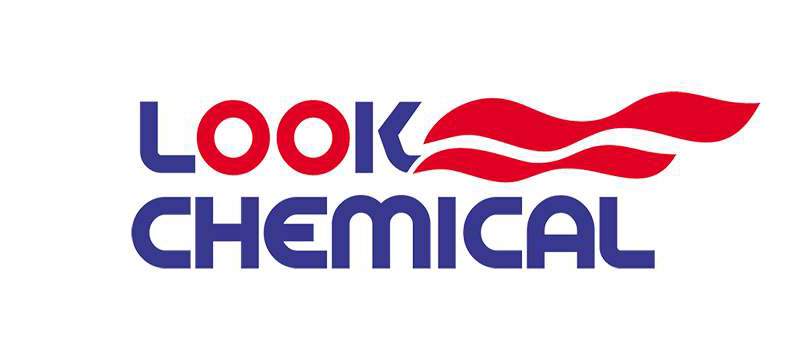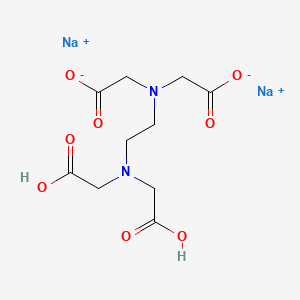ShanDong Look Chemical Co.,Ltd

Ethylenediaminetetraacetic Acid Disodium Salt CAS 139-33-3 | Look Chemical
CAS No. 139-33-3
EINECS: 205-358-3
Chemical Name: Ethylenediaminetetraacetic Acid Disodium Salt
Category: Food additives
Molecular Formula: C10H14N2Na2O8
Molecular Weight: 336.21
Purity: 99%min
Brand Name: Look Chemical
Place of Origin: China
Name: Ethylenediaminetetraacetic Acid Disodium Salt
CAS: 139-33-3
Purity: 99%min
MOQ: 1KG
The Complete Guide of Ethylenediaminetetraacetic Acid Disodium Salt
- Basic Info
- What is Ethylenediaminetetraacetic Acid Disodium Salt?
- Detailed Explanation of Food Additives - Disodium Ethylenediaminetetraacetate
- Application of Disodium Ethylenediaminetetraacetate
- The Difference between Disodium Ethylenediaminetetraacetate and Tetrasodium Ethylenediaminetetraacetate
- Service
- Packaging and Shipping of Crystal Violet Lactone
Ethylenediaminetetraacetic Acid Disodium Salt Chemical Formula

Basic Info
| CAS No: | 139-33-3 |
| MF: | C10H14N2Na2O8 |
| Molecular Weight: | 336.21 |
| EINECS: | 205-358-3 |
| Appearance: | White powder |
| Product Name: | Ethylenediaminetetraacetic Acid Disodium Salt |
| Other Name: | EDTA-2NA |
| Place of Origin: | China |
| Brand: | Look Chemical |
What is Ethylenediaminetetraacetic Acid Disodium Salt?
The molecular weight of disodium ethylenediaminetetraacetate is 372.25. Also known as disodium ethylenediaminetetraacetate, commonly known as disodium etylate, referred to as EDTA disodium salt, code name M-23. White or slightly yellow crystalline powder. Soluble in water, insoluble in ethanol and ether. It begins to lose crystal water at 100°C and becomes an anhydrous salt at 120°C. It can react with calcium ions in hard water to form soluble salts. It can also eliminate the damaging effect of copper ions and iron ions on the Caiyi developer solution during storage and prevent the formation of fog. It is an important complexing agent and water softener. Used in photographic developer, color developer, pre-bath, stabilizing, fixing and other solutions. The container should be sealed and stored in a cool, dry and ventilated place.
At present, the equipment for large-scale production of disodium ethylenediaminetetraacetate at home and abroad is a general enamel reactor. The mature process is roughly as follows: neutralize ethylenediaminetetraacetic acid with sodium hydroxide or Na2CO3, and then concentrate , cooling, crystallization, filtration, dehydration, drying, packaging and other processes to obtain the finished product. However, since each reactant is added at once during the reaction process, the reaction solubility is difficult to control, side reactions are prone to occur, the yield is not high, and the purity is also low. Affected, inferior appearance. Therefore, the existing process and equipment for producing disodium ethylenediaminetetraacetate need to be improved.
Detailed Explanation of Food Additives - Disodium Ethylenediaminetetraacetate
As a food additive, disodium ethylenediaminetetraacetate is widely used as a stabilizer, antioxidant, preservative, and chelating agent to prevent discoloration, deterioration, turbidity and oxidative loss of vitamins caused by metal ions.
Disodium ethylenediaminetetraacetate (also known as disodium EDTA) is used in food, medicine, cosmetics and other products. According to GB2760-2014, food-grade disodium ethylenediaminetetraacetate can be used as a stabilizer, coagulant, and antioxidant. and preservatives, which can play a role in color protection, antioxidant, anti-corrosion synergy and stabilization. It is a powerful chelating agent. Due to its high stability constant and extensive coordination properties, it can interact with most metal ions other than alkali metals (such as iron, copper, calcium, magnesium and other multivalent ions). Chelation creates stable, water-soluble complexes that eliminate metal ions or harmful reactions caused by them.
Disodium EDTA has three specific functions:
- Utilize its complexation to prevent harmful reactions such as discoloration, deterioration, turbidity and oxidative loss of vitamin C caused by metal ions.
- As a water treatment agent, it can prevent the adverse effects of calcium, magnesium, iron, manganese and other metal ions present in the water.
- Trace metals (iron, copper, etc.) in oil can promote the oxidation of oil. This product can complex with trace metal ions, which can improve the antioxidant of oil and prevent food discoloration.
Disodium EDTA is widely used in beverages (except packaged drinking water) (0.03g/kg), jams, vegetable purees (sauce), except tomato sauce (0.07g/kg), compound seasonings (0.075g /kg), preserved sweet potatoes, pickled vegetables, canned vegetables, canned nuts and seeds, canned grains (0.25g/kg).
For example, when used for pickling sauerkraut and kimchi, the color of the sauerkraut can be uniform and bright, the shelf life can be significantly extended, and the color fixing and preservation effect is obviously better than that of VC and phosphate; before sterilization, it can be added to canned vegetables and mushrooms together with seasonings , can maintain the color of the product, prevent boiling water from being turbid, and play a color-protecting role; it can delay the oxidation and rancidity of oil in various sauces and seasonings, and has a preservative synergistic effect, preventing the seasoning from turning gray and changing the flavor; it can also be used in carbonated sauces and seasonings. In beverages and fermented malt beverages, it is used as a color protectant and stabilizer to inhibit the catalytic oxidative deterioration of metals in beverages and keep the flavor of the beverage unchanged.
References
Ethylenediaminetetraacetic acid disodium salt – PubChem
Detailed explanation of food additives – disodium ethylenediaminetetraacetate
CN201410540646.9 A food antioxidant additive containing glucono-delta-lactone as a stabilizer containing disodium ethylenediaminetetraacetate
Ethylenediaminetetraacetic Acid Disodium Salt for Sale
Application of Disodium Ethylenediaminetetraacetate
Disodium ethylenediaminetetraacetate is a powerful chelating agent, preservative and antioxidant. Because of its high stability constant, it can form stable complexes with most metal ions except alkali metals, eliminating metal ions or causing them to It can inhibit the turbidity of water in boiled food and prevent the food from oxidation and discoloration, thus playing the role of antioxidant, color protection and antisepsis, and making the product quality stable. It is an extremely widely used color protection agent, quality improver and anti-corrosion agent. Oxidant, antiseptic and preservative, widely used in the preservation and color protection of fruits, vegetable products, dairy products, beverages, meat products, preserved fruits and sauces, and also used in the antioxidant of oils and flavors.
Its main uses can be summarized as:
- Used as stabilizer for man-made fibers.
- Used in fabric bleach.
- Used as developer in photography industry.
- Used as preservatives and vegetable preservatives in the food industry.
- Leather industry.
- Used as beneficiation agent in mines.
- In the chemical industry, it is used as a reducing agent to produce high-wave raw materials.
- Introducing sulfo groups in organic synthesis to synthesize dyes and pigments.
- In addition, it is also used in the paper industry, electroplating industry, foundry industry, and pharmaceutical industry. Some sodium sulfite products are used as water reducing agents and environmentally friendly sewage treatment.
The Difference between Disodium Ethylenediaminetetraacetate and Tetrasodium Ethylenediaminetetraacetate
EDTA is also called “ethylenediaminetetraacetic acid”, and disodium EDTA is “disodium ethylenediaminetetraacetate”. The latter is the sodium salt of the former. They all have strong chelating effects on metal ions. However, the solubility of EDTA in water is small (solubility at room temperature is 0.02g/100mL), while the solubility of disodium EDTA is high (11.1g/100mL). Therefore, for the convenience of application, the sodium salt of EDTA is generally used in cosmetics. In addition to disodium EDTA, tetrasodium EDTA also has good water solubility, but the PH of tetrasodium is strongly alkaline, while disodium is weakly acidic, so disodium EDTA is the most commonly used in cosmetics. , the EDTA that everyone often refers to generally refers to disodium EDTA.
Differences in physical and chemical properties
Disodium ethylenediaminetetraacetate, referred to as EDTA-2Na, chemical formula C10H14N2Na2O8, is white crystalline particles or powder, odorless and tasteless. Soluble in water, extremely difficult to dissolve in ethanol.
Tetrasodium ethylenediaminetetraacetate is referred to as EDTA-4Na, and its chemical formula is C10H12N2O8Na4. It is a white powder, soluble in water and acid, and insoluble in alcohol, benzene and chloroform.
Differences in use
Disodium ethylenediaminetetraacetate (EDTA-2Na) is an important chelating agent that can chelate metal ions in solution. It prevents discoloration, deterioration, turbidity and oxidative loss of vitamin C caused by metals, and also improves the antioxidant properties of oils (trace metals in oils such as iron and copper can promote the oxidation of oils). It can also be used as a heavy metal detoxifier, complexing agent, antioxidant synergist, stabilizer and softener for calcium, magnesium and other metal reagents, and metal masking agent.
Tetrasodium ethylenediaminetetraacetate (EDTA-4Na) is an important complexing agent and metal masking agent. It can be used in dyeing in the textile industry, water quality treatment, color photosensitivity, medicine, daily chemicals, papermaking and other industries. Used as water softener, synthetic rubber catalyst, acrylic polymerization terminator, printing and dyeing auxiliary, detergent auxiliary, etc. It is also used for titration in chemical analysis. It can accurately titrate a variety of metal ions and is widely used. As an additive, activator, water purifier, metal ion screening agent and activator in the styrene-butadiene rubber industry. In the dry process acrylic industry, it can offset metal interference and improve the color and brightness of dyed fabrics. It can also be used in liquid detergents to improve washing quality and enhance washing effect.
Learn More
Professional Ethylenediaminetetraacetic Acid Disodium Salt Supplier
As a professional chemical supplier, we have ten years of chemical supplier experience, more professional and reliable, 24 hours service. Provide free samples.If you want to know more, please come to consult us.
Service
Pre-Sales Service
* Prompt reply and 24 hours online, professional team to provide best price and high quality product.
* Sample testing support.
* Every batch of products will be tested to ensureits quality.
* The packing also can be according the customers` requirment.
* Any inquiries will be replied within 24 hours.
* We provide Commerical Invoice, Packing List, Bill of loading, COA , Health certificate and Origin certificate. If your markets have any special requirements, let us know.
After-Sales Service
* The fact of logistics information monitoring.
* Any questions about the product can be consulted at any time.
* Product has any problem can return.
1. ≤50kg, Express delivery recommended, usually called as DDU service;
2. ≤500kg, Air shipping recommended, usually called as FOB, CFR, or CIF service;
3. >500kg, sea shipping recommended, usually called as FOB, CFR, or CIF service;
4. For high value products, please select air shipping and express delivery for safe.
Do you accept sample order?
We will make samples before mass production, and after sample approved, we’ll begin mass production. Doing 100% inspection during production, then do random inspection before packing.
What’s your MOQ?
Our MOQ is 1kg. But usually we accept less quantity such as 100g on the condition that sample charge is 100% paid.
Is there a discount?
Different quantity has different discount.
How to confirm the product quality before placing orders??
You can get free samples for some products,you only need to pay the shipping cost or arrange a courier to us and take the samples. You can send us your product specifications and requests,we will manufacture the products according to your requests.- Do you supply product report?Yes. We’ll give you product analysis report before shipping.
Packaging and Shipping of Ethylenediaminetetraacetic Acid Disodium Salt







